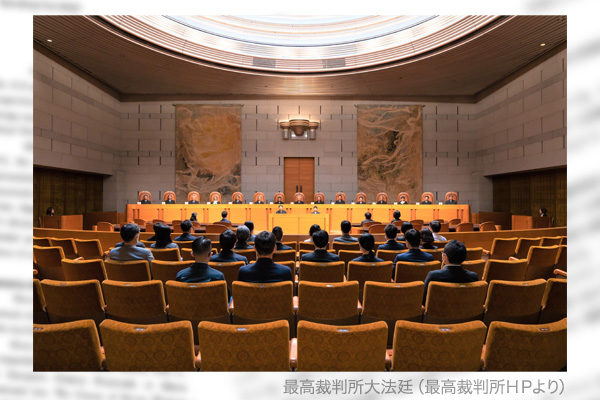As not a few Supreme Court rulings including a recent one on gender change are taken as deviating from public awareness, doubts about the qualifications and awareness of Supreme Court judges are felt. So, it is necessary to reconsider how to select Supreme Court judges.
Cabinet’s selection power becoming nominal
The Japanese Supreme Court consists of the chief judge and 14 other judges. The chief judge is nominated by the cabinet and appointed by the emperor. The other judges are appointed by the cabinet and attested by the emperor. For comparison, the judges of inferior courts are appointed by the cabinet from a list of persons nominated by the Supreme Court.
The cabinet’s involvement in the selection of Supreme Court judges is explained as balancing between judicial and executive powers. At present, the cabinet selects roughly six from court judges, two from prosecutors, four from lawyers, two from administrative officials (from the Ministry of Foreign Affairs, Cabinet Legislation Bureau, Ministry of Health, Labour and Welfare, etc.) and one from jurists, almost automatically by receiving recommendations from their parent bodies, such as courts, prosecutors’ offices, bar associations, etc. The cabinet’s power to select Supreme Court judges is thus nominal. Not many Japanese people know the names of Supreme Court judges.
As a system of democratic control on the judiciary, there is a national review of Supreme Court judges conducted on the occasion of general elections. A judge is dismissed only when the majority of voters favor his or her dismissal. It is said to have imitated the system of the U.S. state of Missouri, but there are not many similar systems abroad. No Supreme Court judge has been dismissed through the national review, indicating that the system is also nominal.
U.S. Supreme Court justices are appointed by the president with the approval by the Senate, according to the constitution. The Senate summons Supreme Court justice candidates nominated by the president to the Judiciary Committee, asks them intense questions, and conducts investigations. The president’s political affiliation is reflected in the nomination of candidates, making big news and allowing many people to know who candidates are and what the issues are.
Constitutional amendment is required to get Diet involvement
When the current Supreme Court was created in Japan after the World War II, an advisory committee for the appointment of top court judges, consisting of Speaker of the House of Representatives, President of the House of Councilors, Prosecutor-General, presidents of bar associations, academics and others, was established in March 1947 and selected 30 candidates, including 15 who were eventually chosen. However, this system was abolished in January 1948 because it was interpreted as constraining the cabinet’s nomination/appointment power and obscuring the cabinet’s responsibility.
It is conceivable that an organization similar to the advisory committee may be revived. As indicated above, however, such organization would conflict with the cabinet’s constitutional authority. If the cabinet’s selection is given priority to avoid such conflict, deliberation at the advisory organization will be perfunctory and nominal.
If approval by both or one of the two houses of the National Diet is required for the selection of Supreme Court judges, debate would be activated, as seen in the United States, leading people to get interested in future Supreme Court judges.
However, a constitutional amendment will be required to create such system. Constitutional amendments are currently a pressing issue in Japan, providing a good opportunity to reconsider how to select Supreme Court judges.
Katsuhiko Takaike is an attorney-at-law and Vice President of the Japan Institute for National Fundamentals.


